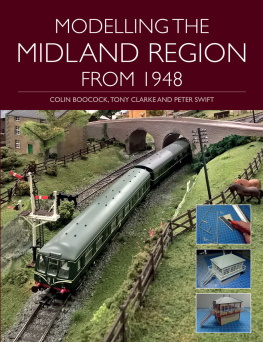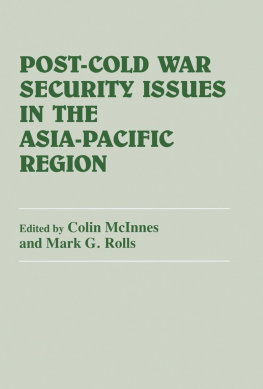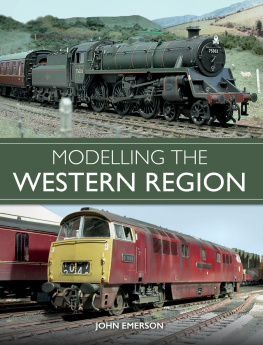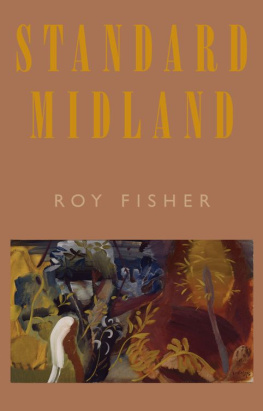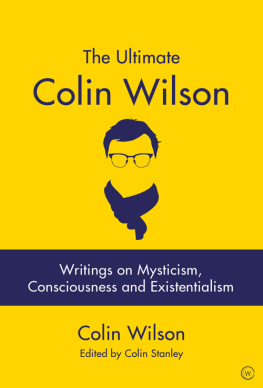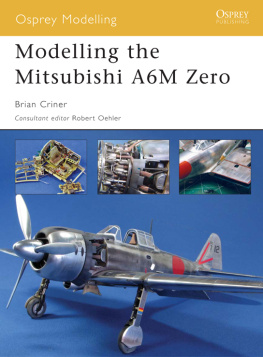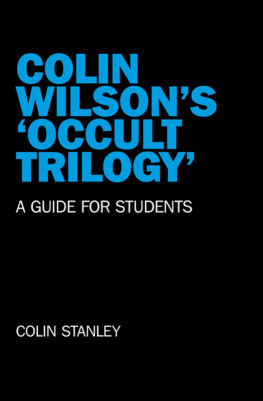Boocock Colin - Modelling the Midland Region from 1948
Here you can read online Boocock Colin - Modelling the Midland Region from 1948 full text of the book (entire story) in english for free. Download pdf and epub, get meaning, cover and reviews about this ebook. publisher: Crowood, genre: Non-fiction. Description of the work, (preface) as well as reviews are available. Best literature library LitArk.com created for fans of good reading and offers a wide selection of genres:
Romance novel
Science fiction
Adventure
Detective
Science
History
Home and family
Prose
Art
Politics
Computer
Non-fiction
Religion
Business
Children
Humor
Choose a favorite category and find really read worthwhile books. Enjoy immersion in the world of imagination, feel the emotions of the characters or learn something new for yourself, make an fascinating discovery.
- Book:Modelling the Midland Region from 1948
- Author:
- Publisher:Crowood
- Genre:
- Rating:4 / 5
- Favourites:Add to favourites
- Your mark:
- 80
- 1
- 2
- 3
- 4
- 5
Modelling the Midland Region from 1948: summary, description and annotation
We offer to read an annotation, description, summary or preface (depends on what the author of the book "Modelling the Midland Region from 1948" wrote himself). If you haven't found the necessary information about the book — write in the comments, we will try to find it.
Modelling the Midland Region from 1948 — read online for free the complete book (whole text) full work
Below is the text of the book, divided by pages. System saving the place of the last page read, allows you to conveniently read the book "Modelling the Midland Region from 1948" online for free, without having to search again every time where you left off. Put a bookmark, and you can go to the page where you finished reading at any time.
Font size:
Interval:
Bookmark:
MODELLING THE
MIDLAND REGION
FROM 1948

MODELLING THE
MIDLAND REGION
FROM 1948
COLIN BOOCOCK, TONY CLARKE AND PETER SWIFT

THE CROWOOD PRESS
First published in 2019 by
The Crowood Press Ltd
Ramsbury, Marlborough
Wiltshire SN8 2HR
www.crowood.com
This e-book first published in 2019
Colin Boocock, Anthony Clarke and Peter Swift 2019
All rights reserved. This e-book is copyright material and must not be copied, reproduced, transferred, distributed, leased, licensed or publicly performed or used in any way except as specifically permitted in writing by the publishers, as allowed under the terms and conditions under which it was purchased or as strictly permitted by applicable copyright law. Any unauthorised distribution or use of this text may be a direct infringement of the authors and publishers rights, and those responsible may be liable in law accordingly.
British Library Cataloguing-in-Publication Data
A catalogue record for this book is available from the British Library.
ISBN 978 1 78500 520 6
Acknowledgements
The authors would like to express their grateful thanks to Famous Trains member Peter R. Stanton, a retired railway electrical engineer, for his input into the sections on electrification and lighting.
All uncredited photographs and diagrams are by the authors. Photographs by others are credited in the caption.
The authors have also downloaded a number of items from the internet. Where a licence does not explicitly cover reproduction, they have made every effort, not always with success, to trace the copyright holder. Any inadvertent breach of copyright is entirely unintentional, and copyright holders are asked to contact the publisher with regard to any fee that may be due.
Frontispiece: On this model of Chinley station, the left bracket signal is set for straight ahead; this arm is higher than the one that would indicate diversion to the line heading off right. This bracket signals base will eventually be buried under the platform surface and the operating wires made less visible. The other pair of bracket signals that control the exit from the bay platform are of the same height, indicating routes of equal status.
CONTENTS
PREFACE
When we were first asked to create a book about modelling the London Midland Region of British Railways from 1948, the term Midlandness was coined. It was used to refer to those features of the whole railway that identified the London Midland Region as a distinct entity, and could be reasonably modelled.
My colleagues and I from the Famous Trains Charity Model Railway in Derby will endeavour to outline the historical aspects up to the nationalization and after, with a view to modelling those features still apparent in locomotives, rolling stock, infrastructure and buildings. We will then show how they may be represented accurately in model form.
Whatever stage you are at in creating a model railway beginning with a train set and building up, creating a larger and more realistic model using flexible track and more sophisticated control equipment, or recreating a real place in model form the more accurate your model, the more convincing it will be. And the more convincing your model, the greater your satisfaction and your enjoyment of the hobby will be.

Print of the London & Birmingham Railways Euston terminus in 1837 showing a train of open carriages, ready to be rope-hauled to Camden, where a locomotive will be attached. Over the next 100 years, Euston grew in a piecemeal fashion, causing confusion to passengers and difficulties for the operating staff.
We will not spend time describing how to design your plan, lay track and ballast, wire up the electrics or choose whether to operate by DCC or analogue control. However, if you wish to create a model based on part of the London Midland Region of British Railways, this book should help you to produce something that is readily identifiable as part of that Region, whether it is freelance or an accurate representation of a real place.
The London Midland Region of British Railways was the largest in area of the Regions created after nationalization. It covered a huge part of England, from London to the north and north-west, to the Scottish borders and the coast of North Wales, through central Wales to the south and into the south-west, overlapping the territory of the Western Region and the Southern. It served huge metropolitan cities and towns, with heavy industry and mass movement of people as well as freight. It ran through scenically outstanding areas such as the Peak District, and into the Lake District. It also followed the North Wales coast to Anglesey and, jointly with the SDJR, ran across Somerset and Dorset, down to the south coast at Bournemouth. The Region as a whole enjoyed a wide variety of scenery, from mountainous areas to the seaside, rolling farmland to giant limestone quarries, and small rural villages to busy industrial towns. Choosing an appropriate setting for a model is vital to creating the feeling of Midlandness.
Unless you have a very large room in which to model, you will almost certainly be limited to modelling one type of area, town or countryside, seaside or small branch line. Wherever you choose, there will be distinct features that will enable you to model your chosen subject in a convincing manner.

With the coming electrification of the West Coast Main Line, old Euston had to go and demolition started. By 26 April 1964, all the later additions had gone, and a new Euston was taking shape behind.
To achieve this aim, we shall begin by providing a detailed and complete account of the locomotives and rolling stock that would have been present on the London Midland Region from its creation in 1948 until 1988. This will include all the items that are available to allow you to model accurately in the most popular scales. Realistic models of other prototypes may be created by modifying ready-to-run models or kits. We will show how this may be done using examples that feature on the Famous Trains Model Railway in Derby.
We will then take a look at the necessary parts of the infrastructure directly associated with the railways stations, and so on before looking at some scenic ideas that are most relevant to the London Midland Region.
We will also cover signalling, an area often omitted from layouts, partly due to a lack of understanding as to where to place which signals. We will look at headcodes, too, and the positioning of head and tail lamps on trains.
Finally, we have a chapter that is especially for modellers who wish to focus on an area of the London Midland Region where electrification was used as a means of locomotion.
CHAPTER ONE
THE FORMATION OF THE LONDON MIDLAND REGION
The London Midland Region of British Railways was formed in 1948, with the nationalization of the four privately owned companies that had run most of Britains railways since 1923. The LM Region comprised the English and Welsh lines of the London Midland and Scottish Railway (LMS). The LMS also operated in Scotland and Northern Ireland but these lines passed to the Scottish Region and Ulster Transport Authority. The LMS, together with the LNER, Southern and an enlarged GWR, had been formed in 1923 following a Government-decreed amalgamation of the companies that had owned and run the railways up to that date.
Next pageFont size:
Interval:
Bookmark:
Similar books «Modelling the Midland Region from 1948»
Look at similar books to Modelling the Midland Region from 1948. We have selected literature similar in name and meaning in the hope of providing readers with more options to find new, interesting, not yet read works.
Discussion, reviews of the book Modelling the Midland Region from 1948 and just readers' own opinions. Leave your comments, write what you think about the work, its meaning or the main characters. Specify what exactly you liked and what you didn't like, and why you think so.

